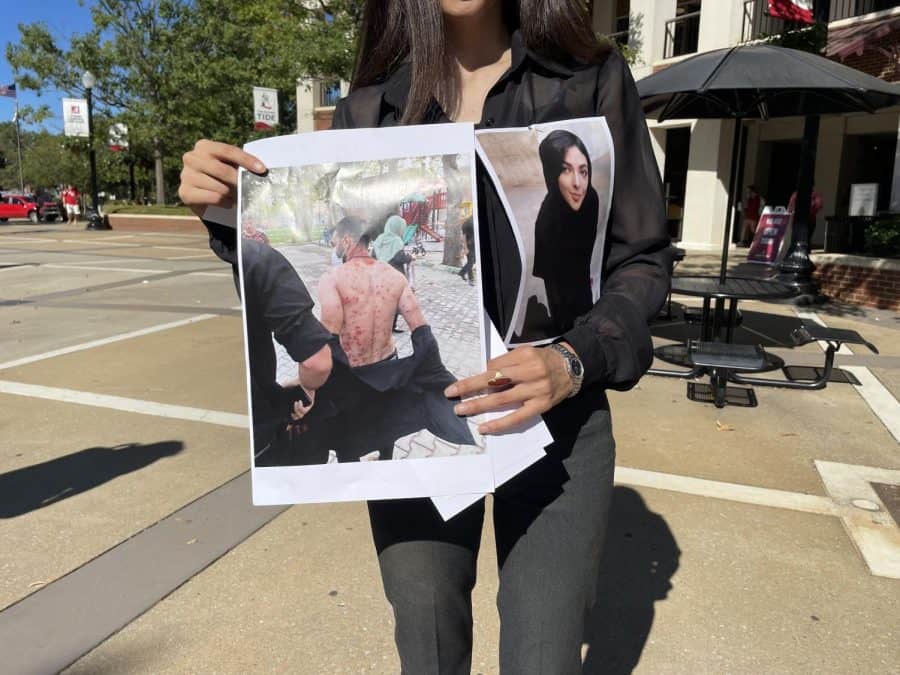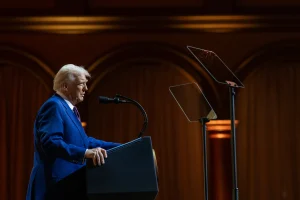“Women. Life. Freedom.”: Protestors stand to end violence and discrimination against women in Iran
September 28, 2022
Students and faculty gathered at the UA Student Center Plaza on Tuesday, Sept. 27, to protest and raise awareness of the events taking place in Iran.
Mahsa Amini died on Sept. 16 at 22 years old after Iran’s morality police arrested her for failing to comply with Iran’s strict dress codes for women in public by wearing her hijab improperly. Iranian authorities claim Amini died of a heart attack, though some sources suggest that her death was a result of torture and ill treatment. Since then, protests have erupted worldwide.
“It’s not that people are against the hijab because it’s something Islamic, it’s because it has been mandatory for people who do not believe in it,” said Faece Alibeiki, a doctoral student studying comparative politics.
Protesters at the University stood with signs, sang songs and showed photos and videos of the abuses happening in Iran. Protesters could also be heard chanting “Women, Life, Freedom” — a chant used by protesters in Iran. They had two bulletin boards showing Amini, as well as other people who had been murdered or beaten by the morality police.
“We want to be their voice, we want to let them know that the whole world is supporting them,”Alibeiki said.
In Iran, women are not allowed to wear what they want, sing or play an instrument, and in some universities, they are not even allowed to sit in the same classroom as men.
“I had to teach at a university where girls and boys had to go to different buildings,” said Behzad Mansouri, a UA alumnus. “I had to teach everything the same at one time to girls and another time to boys.”
Amini was not the first that has been brutally killed for not following strict appearance laws. According to Mansouri, there were many people who have been killed by Iranian police without the public’s knowledge.
“This has been my life, that is the reason we all relate to Mahsa Amini who was killed because that could’ve been one of us,” Alibeiki said. “I was dressing the exact same way. I could’ve been arrested, and I could’ve been killed.”
Alibeiki said the Islamic Republic identity is centered around symbolic and institutional repression of women, and the repressions are based off the legal system and the constitution, so there is no legal way to protest against them.
“It’s not as if people don’t know how to protest non-violently, we’ve already tried that,” Alibeiki said.
The main reason for the event was to spread awareness about what is going on in Iran, especially because the people of Iran themselves cannot.
“It’s really hard to keep silent when observing that brutal regime responds to people in a violent manner just because they are protesting for their basic rights,” said Ehsan Mahyari, an Iranian doctoral student studying business.
Alibeiki said that if people understand the emotions behind the protest movement, it will facilitate change.
“To the women protesting in Iran, we’ve been there and we don’t forget you,” Alibeiki said. “We are going to be your voice.”





















